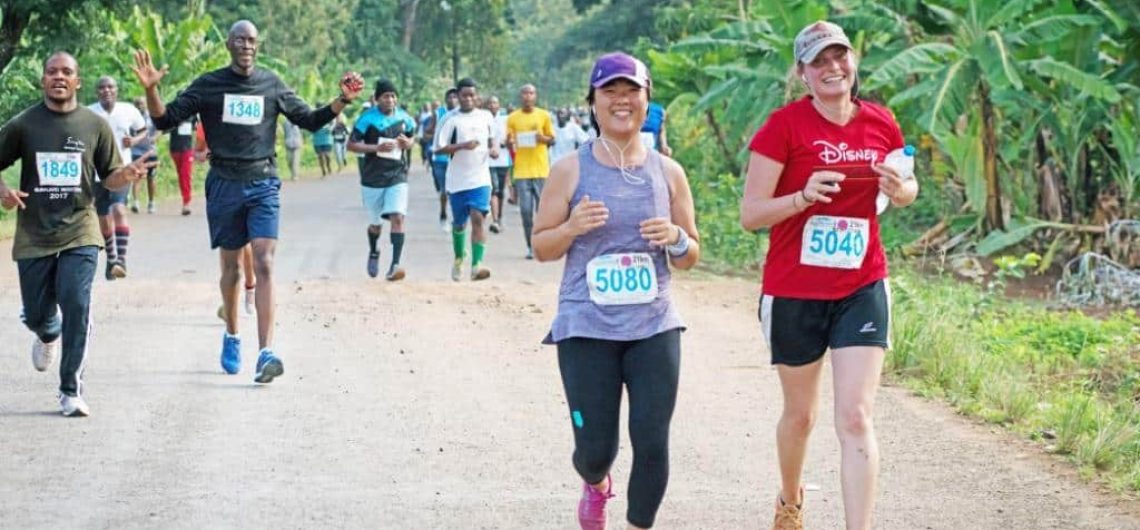The Kilimanjaro Marathon also known as the Kilimanjaro international Marathon or simply as Kili marathon is not just an ordinary race; it’s a journey that takes participants through the breathtaking landscapes of Tanzania, with the iconic Mount Kilimanjaro as the backdrop. Participants have the opportunity to experience the rich culture of the region, interact with local communities, and create lasting memories along the way. The race offers a unique blend of physical challenge and cultural immersion that sets it apart from other marathons around the world. As runners lace up their shoes and prepare to embark on this extraordinary adventure, it’s essential to understand the significance of proper preparation for such a monumental event. In this guide, we’ll delve into the essential aspects of training, packing, and readiness, ensuring that participants are equipped with the knowledge and tools necessary to tackle the Kilimanjaro Marathon with confidence and success. Whether it’s adjusting to the altitude or navigating the varied terrain, proper training and preparation are key to a successful race day. By following these guidelines and tips, participants can maximize their experience and truly appreciate the beauty of running in one of Africa’s most iconic locations.
Pre-Marathon Preparation
Before stepping foot on the starting line of the Kilimanjaro Marathon, adequate preparation is paramount. From establishing a comprehensive training schedule to meticulously packing essential gear, every aspect of pre-marathon readiness contributes to a runner’s performance and overall experience. In this section, we’ll explore the ins and outs of pre-marathon preparation, offering valuable insights and tips to help participants optimize their training regimen and ensure they’re fully equipped for the challenges that lie ahead. Whether you’re a seasoned runner or a first-time participant, taking the time to properly prepare for the Kilimanjaro Marathon can make all the difference on race day. By focusing on both physical and mental readiness, runners can increase their chances of success and truly enjoy the journey through one of Africa’s most iconic locations.
A. Training schedule and tips
- Engaging in cardiovascular exercises forms the cornerstone of marathon preparation, building endurance and stamina.
- Incorporating strength training routines helps to fortify muscles and prevent injury.
- Maintaining a balanced diet and staying hydrated are essential for fueling the body during training.
B. Packing essentials
- Proper running shoes and attire ensure comfort and performance on race day.
- Sunscreen and a hat protect from the sun’s rays during the marathon.
- Carrying personal identification and money is crucial for emergencies and post-race needs.
During the Kilimanjaro Marathon
As the race day dawns and participants gather at the starting line, a palpable sense of excitement fills the air. The Kilimanjaro Marathon is not just about covering a distance; it’s about immersing oneself in an exhilarating journey filled with camaraderie, determination, and unforgettable moments. In this section, we’ll guide runners through the intricacies of race day procedures, offering advice on everything from warm-up exercises to pacing strategies. Whether you’re a seasoned marathoner or a first-time participant, this section will provide valuable insights to help you navigate the Kilimanjaro Marathon with confidence and grace. From the moment the starting gun goes off, runners will be surrounded by a diverse group of athletes from around the world, all united in their passion for running. The Kilimanjaro Marathon offers a unique opportunity to challenge yourself, push your limits, and create lasting memories on the breathtaking course.
A. Start line procedures
- Warm-up exercises prepare the body for the physical demands of the marathon.
- Positioning oneself strategically in the crowd can help avoid congestion and ensure a smooth start.
- Adhering to race guidelines and instructions promotes safety and fairness for all participants.
B. Running tips
- Pacing oneself throughout the race helps to conserve energy and maintain endurance.
- Staying hydrated by drinking water at designated stations along the route is vital for performance.
- Listening to one’s body and making adjustments accordingly can prevent fatigue and injury during the race.
C. Spectator and supporter activities
- Cheering on fellow runners boosts morale and creates a supportive atmosphere along the course.
- Providing water and snacks to runners contributes to their hydration and energy levels.
- Capturing memorable moments on camera preserves the spirit and excitement of the marathon for participants and spectators alike.
Post-Marathon Recovery
Crossing the finish line of the Kilimanjaro Marathon is a momentous achievement, but it’s only the beginning of the post-race journey. Proper recovery is essential for ensuring that participants can bask in the glory of their accomplishments and prepare their bodies for future endeavors. In this section, we’ll explore the importance of cooling down, stretching, and replenishing the body after the race. From celebrating with fellow participants to reflecting on the journey, this section will guide runners through the essential steps of post-marathon recovery, leaving them refreshed, rejuvenated, and ready to take on whatever challenges come their way. Whether it’s a massage, a nutritious meal, or simply some relaxation, taking care of the body after a race is crucial for long-term health and success. By following these recovery tips, runners can ensure that their hard work pays off and they can continue to push themselves to new limits in the future.
A. Cooling down and stretching
- Engaging in gentle stretching exercises helps to alleviate muscle tension and prevent stiffness.
- Hydrating and refueling the body with nutritious foods aid in recovery and replenishment.
- Allowing for adequate rest and recovery time allows the body to recuperate fully from the physical exertion of the marathon.
B. Celebration and reflection
- Participating in post-race festivities and awards ceremonies honors the achievements of runners and celebrates the spirit of the event.
- Sharing experiences and camaraderie with fellow participants fosters a sense of community and mutual support.
- Setting new fitness goals for the future encourages continued growth and personal development in the realm of running.
![]()


Comments